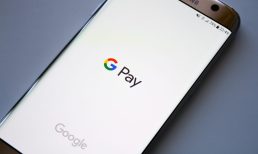The advance of Amazon’s cashierless technology is not a new story to the retail beat as of 2020. Since the first AmazonGo retail location opened in early 2018 with its much-hyped walk-in, walk out retail technology designed to make the line at checkout a thing of the past, Amazon has been slowly but surely expanding the technology’s footprint — there are now 26 Go stores in operation in the U.S. — with new openings scheduled for New York, Chicago, Seattle and San Francisco on the agenda for his year.
And, as of reports two weeks ago, cashierless tech is breaking out of the small footprint, convenience store-esque locations that are Amazon Go stores. As of the end of February, Amazon announced the tech was making its full-fledged grocery debut in the form of Amazon Go Grocery stores. The new 10,000 square foot locations will sell around 5,000 stocked items including fresh produce, meats and alcohol. That incidentally, is much smaller than the average U.S. grocery location, which has approximately four times more floor space and roughly five to eight times more goods. But it is a significant bump in size from the typical Go location — which are generally slightly over 1,000 square feet.
“We’re not trying to be Whole Foods. We’re not trying to replace them,” Cameron Janes, vice president of Amazon’s physical retail division, told CNBC. “I think what we’re trying to do here — and with all of our physical stores — is really work backward from the customer, and deliver some differentiation.”
And while the move made waves — it came as not much of a shock since Amazon has been pursuing cashierless tech for nearly a half-decade, and speculation about when it was going to make its way into Amazon’s physical grocery locations has been ongoing since it acquired Whole Foods in 2017 and started significantly leveling up its grocery game. The assumption as Amazon expanded its efforts into physical retail and physical grocery, in particular, would likely be connected to its cashierless payments technology.
But what perhaps was less forecast was Amazon’s announcement last week that it isn’t just looking to make cashierless the Amazon physical retail experience — but of the physical retail experience in general. As of Monday, reports began to emerge that Amazon will be offering its “Just Walk Out” technology to other retailers for sale. No more long lines at the cashier; instead, according to Amazon, consumers don’t even need to have an Amazon account or download a special app.
“Shoppers enter the store using a credit card. Our Just Walk Out technology detects what products shoppers take from or return to the shelves and keeps track of them in a virtual cart. When done shopping, they can just walk out and their credit card will be charged for the items in their virtual cart,” Amazon wrote on its site explaining the tech’s application in the store’s of other merchants.
Advertisement: Scroll to Continue
The details beyond that, remain sparse. The integration, according to a brief FAQ section offered by Amazon, can take “as little as a few weeks,” that it will work in a wide variety of retail contexts and that the data collection will be minimal and comparable to typical security camera footage and what is necessary “to provide shoppers with an accurate receipt.”
From there, however, the details are quite a bit more sparse. What does Amazon’s technology cost? Unknown. Have other retailers signed on with the service? According to comments made to Reuters yes, several, but which ones and how the technology will be used have not been disclosed. Will the stores accept cash, considering that cities like Philadelphia and San Francisco already require it by law, and Amazon has begun taking cash in one of its lower Manhattan locations? Maybe, maybe not — Amazon has offered no comment on how cash will play into its new cashless tech for third-parties offering.
And — the big question mark — what will Amazon do with all the data “provide shoppers with an accurate receipt” since, as many commentators have noted, that statement could be interpreted pretty widely to allow for an awful lot of very useful data to be collected and used by Amazon. All the data necessary to make an accurate consumer receipt, for example, in aggregate could be used to glean an awful lot of information about shopping trends, shopping habits, products that are starting to catch fire with consumers.
Data that other merchants — particularly those feeling a bit burned by the digital retail revolution that Amazon has kicked off — might not feel like they want to share with Amazon, particularly as Amazon is beginning to encroach on their turf in offline retail as well.
Amazon has said, broadly, Just Walk Out technology data will not be used for anything other than supporting retailers that use it, but it is not clear what data it will share with retailers either. That, we imagine, will give many retailers pause before signing on, even outside the tier of very large players that are directly competing avidly with Amazon across verticals.
Walmart, for example, is almost certainly not buying this technology.
Almost certainly, we noted, because Amazon has persuaded direct and avid competitors to use their payments innovations in the past. Those “buy now” buttons festooning every eCommerce site on the internet was an Amazon invention and under a patent owned by Amazon for many years. A patent that many companies competing with Amazon simply had to bite the bullet and make a toll payment to Amazon over, because one-click buying experience quickly upped eCommerce table stakes.
If consumers start having a similar experience with walk-in, walk-out physical retail tech, it might just be that competitors feel the need to adopt the technology whether it is their first choice innovation or not.
But will they adopt if from Amazon? That is the big question because unlike the “buy it now” function, Amazon isn’t the patent holder on the enabling piece of tech — there are other players doing cashierless checkout. Israeli cashierless startup Triggo announced $22 million in new funding for its retail cashierless tech as 2019 came to an end, 7Eleven has been experimenting with cashierless designs in the U.S. and around the world for 18 months, as have various U.K. supermarket chains Sandersons and Tesco. Stateside, Walmart has been growing its variation on cashierless technology, Scan, Pay and Go at its Sam’s Club locations for the last several years.
When Karen Webster talked to SamsClub.com CEO and Executive Vice President of Membership and Technology Jamie Iannone told her that Walmart and Sam’s Club aren’t interested in expanding someone else’s innovative platform so much as they are interested in building their own.
Sam’s Club, he said, is the world’s only “$60 billion startup.”
And while very few retailers have a side hustle that considers itself a $60 million omnicommerce innovation lab, it does not seem too far a stretch to imagine that there might be a range of retailers interested in having some variation of cashierless technology to leverage, but within that range, there are a lot of firms who might hesitate before handing their receipt data over to Amazon.
But Amazon doesn’t have to capture every retailer to find this technology and turn the commerce world on its head — there are many ways SMBs and brands could leverage this technology to open small and even temporary shops to create quicker, more compact commerce locations with which to reach consumers. Because, as Amazon pointed out in its announcement of the expansion, the tech is meant to serve a wide range of potential partners.
“Our technology has broad applicability. It’s great in places that have high demand, long lines, or wherever customers are pressed for time. The ability to quickly enter, grab what you want, and just walk out without stopping to check out is very appealing to customers,” the web announcement said.
How many retailers — and of what type and size they are — decide to test that broad applicability may just be the unexpected physical retail transformation story 2020 didn’t know it had coming.




